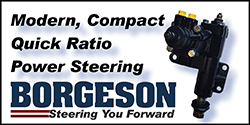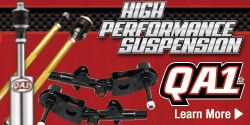I have a edelbrock performer 600cfm manual choke carburetor on my 360 magnum and i am trying to determine if the metering rods have any effect on the amount of fuel that my engine gets at an idle.
I know the idle circuit is seperate from the primary and secondary circuit, but doesnt the fuel from the idle circuit have to go by the metering rods and down the jet at an idle? I was running a pair of 70x47 mtering rods, and i changed to a smaller pair of metering rods wich are 68x42 metering rods and am hoping going down from a 70 to a 68 on the thicker part of the metering rod will expose a little more fuel to the engine at an idle.
I know the idle circuit is seperate from the primary and secondary circuit, but doesnt the fuel from the idle circuit have to go by the metering rods and down the jet at an idle? I was running a pair of 70x47 mtering rods, and i changed to a smaller pair of metering rods wich are 68x42 metering rods and am hoping going down from a 70 to a 68 on the thicker part of the metering rod will expose a little more fuel to the engine at an idle.
















